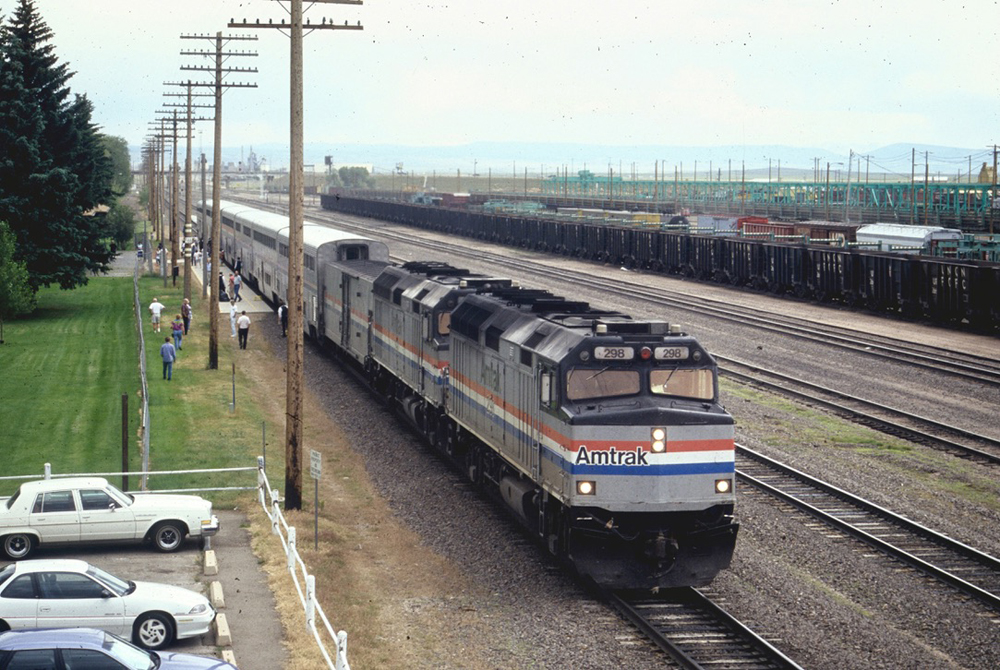
WASHINGTON —The Federal Railroad Administration has launched a website for comments leading to an evaluation of long-distance service Amtrak had previously discontinued, as well as its two current triweekly routes, the New Orleans-Los Angeles Sunset Limited and the New York-Washington-Cincinnati-Indianapolis-Chicago Cardinal.
The “Amtrak Daily Long-distance Service Study” site, which began operation Oct. 28, now only describes the FRA’s mission to examine the possibility of resurrecting routes dropped when faced with federal budget reductions. Cutbacks, additions, and reroutings occurred throughout Amtrak’s history, but pivotal cancellations came in two groups, in October 1979, and May 1997:
October 1979:
— Floridian: Chicago-Nashville-Jacksonville-Miami/Tampa;
— National Limited: New York-Pittsburgh-Columbus, Ohio-Indianapolis-St. Louis-Kansas City;
— Lone Star: Chicago-Wichita-Oklahoma City-Ft. Worth-Dallas/Houston;
— North Coast Hiawatha: Chicago-St. Paul-Bismarck-Billings-Missoula-Spokane-Seattle.
May 1997:
— Desert Wind: Salt Lake City-Las Vegas, Nev.-Los Angeles;
— Pioneer: Denver-Boise-Portland, Ore.,-Seattle.
Other notable long-distance discontinuances were the New York-Philadelphia-Chicago Broadway Limited in September 1995 (though the Pittsburgh-Youngstown-Chicago segment, over CSX’s former Baltimore & Ohio route, was resurrected as an extension of the New York-Pittsburgh Three Rivers from 1996 until 2005), and the Sunset Limited east of New Orleans, after the route was repaired following damage inflicted by Hurricane Katrina in August 2005.
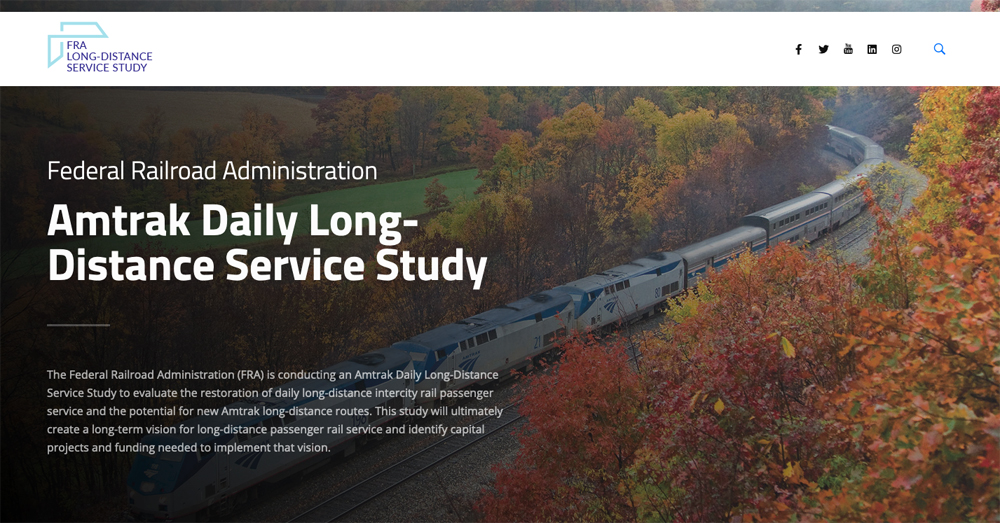
Historical “routes that qualify” information has yet to appear on the site, though it does begin to list evaluation criteria prescribed by Congress in Infrastructure Investment and Jobs Act legislation:
— Link and serve large and small communities as part of a regional rail network;
— Advance the economic and social well-being of rural areas of the United States;
— Provide enhanced connectivity for the national long-distance passenger rail system;
— Reflect public engagement and local and regional support for restored passenger rail service.
Significantly, lawmakers made it a point to have the FRA oversee the process, rather than Amtrak management.
Section 210 of 2008’s Passenger Rail Investment and Improvement Act had required Amtrak to come up with ways it could improve each long-distance route. Reports developed by Brian Rosenwald’s in-house analytical team showed how financial performance and ridership of both the Cardinal and Sunset Limited would substantially benefit from daily operation, while detailing the equipment manipulations to make that happen. But Amtrak’s management under president Joe Boardman and the company’s board of directors — most of whom still serve in that capacity today — never acted on the recommendations after a perfunctory inquiry about cost to the host railroads. Rosenwald was subsequently forced out.
Of the previously discontinued routes, advocacy groups have been actively engaged in lining up regional support to resurrect the North Coast Limited and Pioneer, though key segments of those trains’ original route (into Butte, Mont., and Boise, Idaho, respectively) have been abandoned or severely downgraded.
That fate especially applies to large swaths of the Floridian’s many former routes through Indiana and the National Limited’s irreplaceable ex-Pennsylvania Railroad main west of Pittsburgh across Ohio.
The site notes, “Over the next year, we’ll be engaging with and listening to stakeholders, including transportation and rail partners, federally recognized tribes, and communities as we evaluate how to better connect people with long-distance rail services. This is the first time that many communities, partners, and stakeholders will be included in a study of this magnitude, and we are committed to forming diverse and inclusive groups in every region.”
It isn’t clear how a completely intact route with clear marketability like the Desert Wind’s through Las Vegas, Nev., might be prioritized without a groundswell of grass-roots interest. After all, the major weakness that led to its 1997 downfall is that Amtrak management had reduced it to three times per week.
FRA spokesman Cory Gattie tells Trains News Wire that the study will also evaluate potential new long-distance routes. He says, “FRA’s initial engagement with stakeholders was at the [American Association of State Highway and Transportation Officials] Council on Rail Transportation Conference last month in Kansas City. Moving forward, we intend to post further engagement opportunities on the project website as the study progresses.” Those activities are expected to continue through 2023, as the agency evaluates the practicality and financial feasibility of resurrecting discontinued routes.
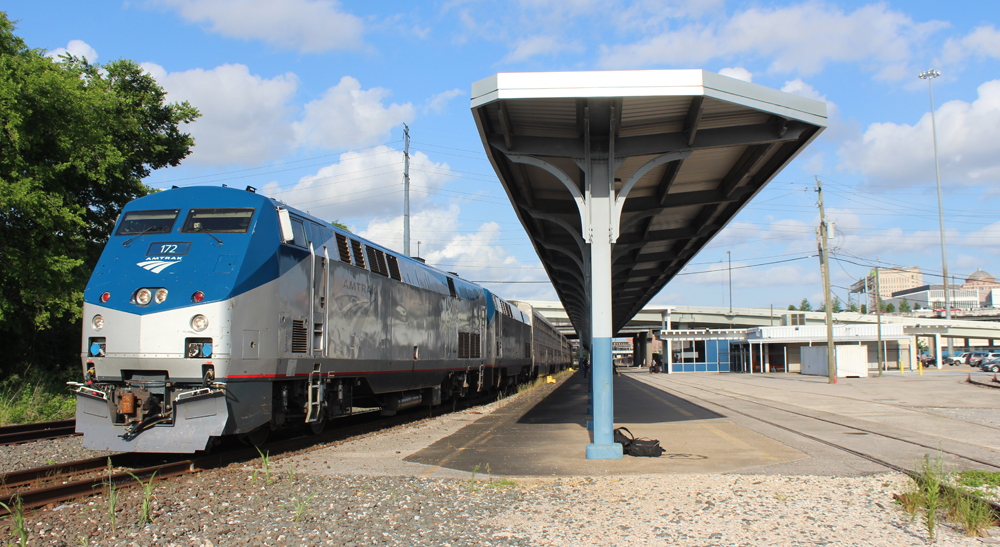






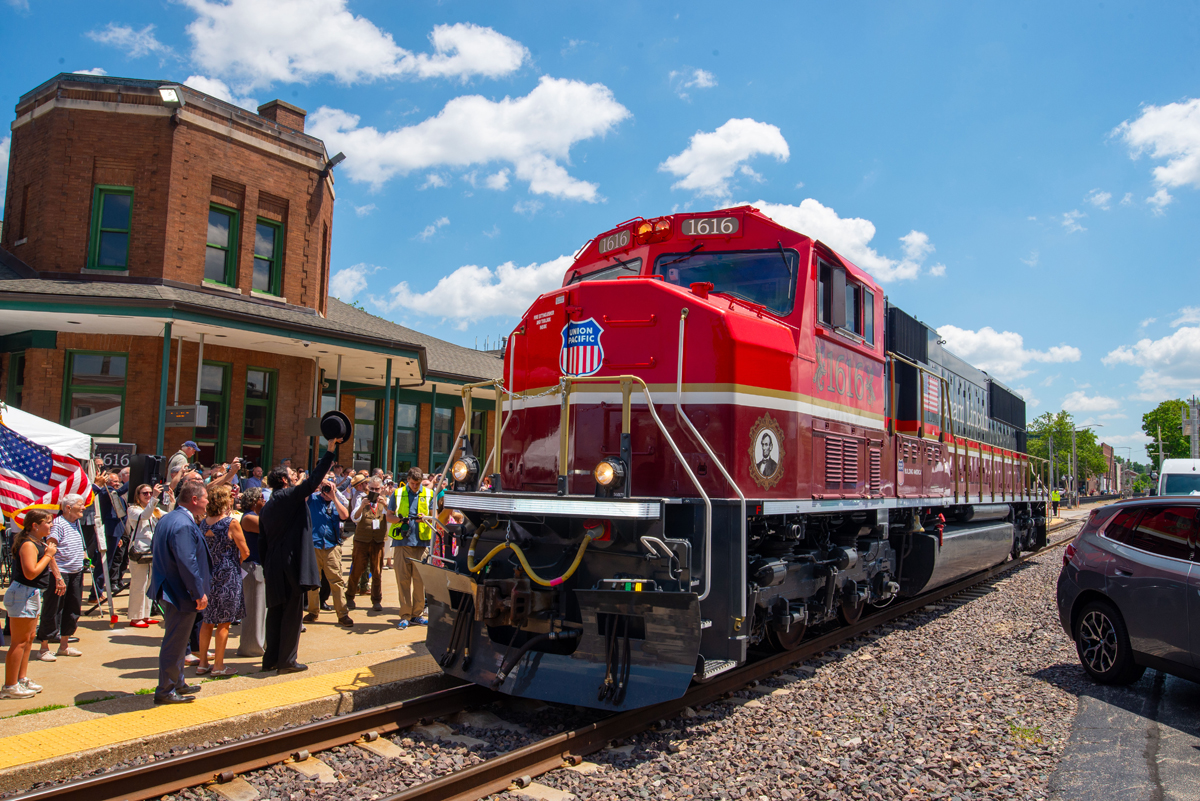
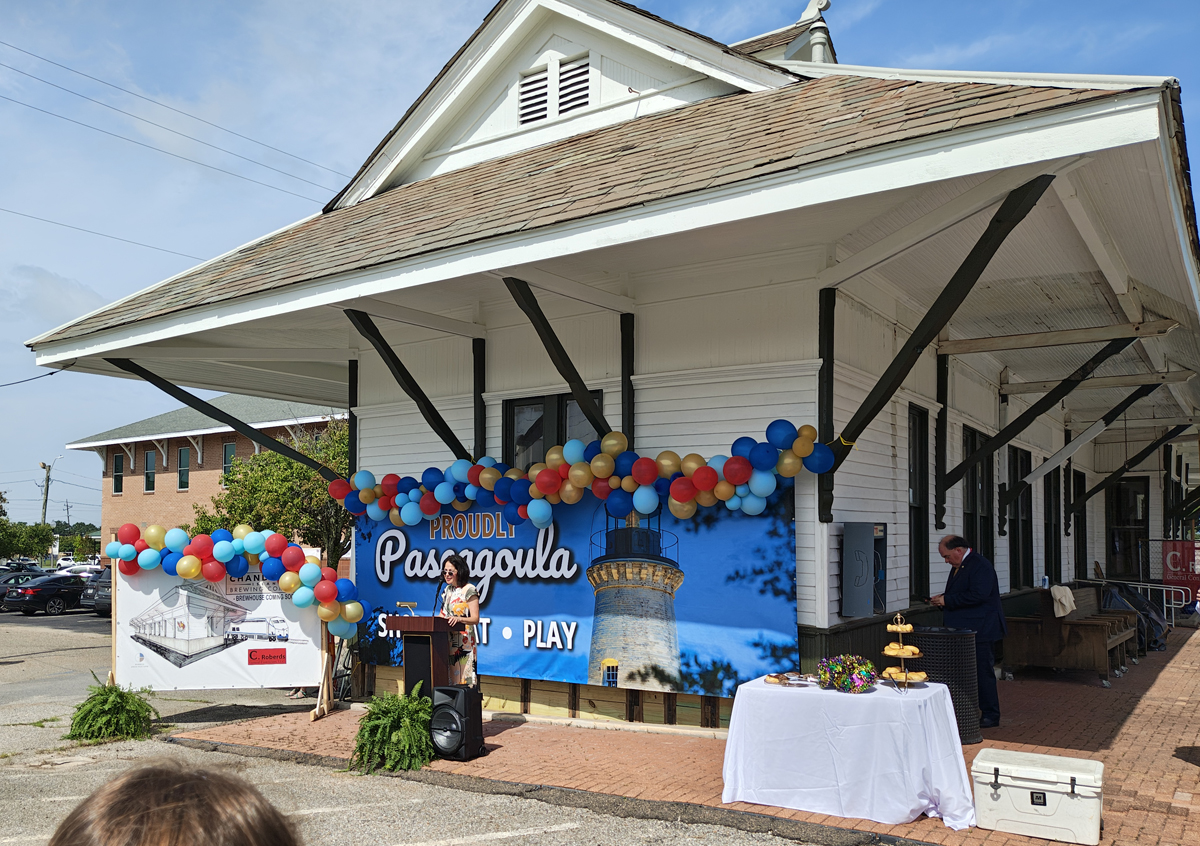
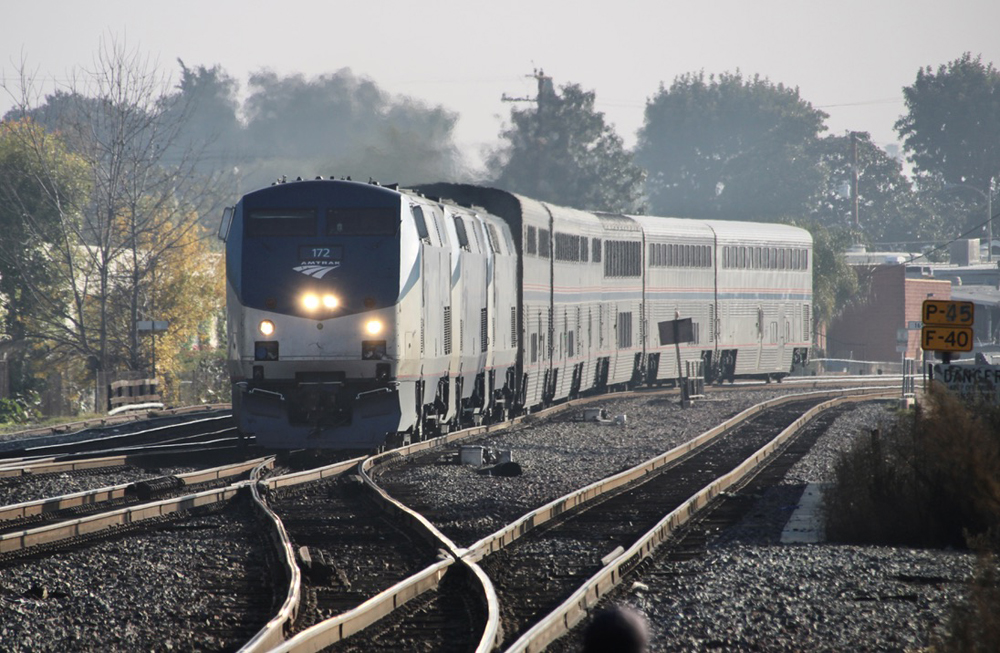
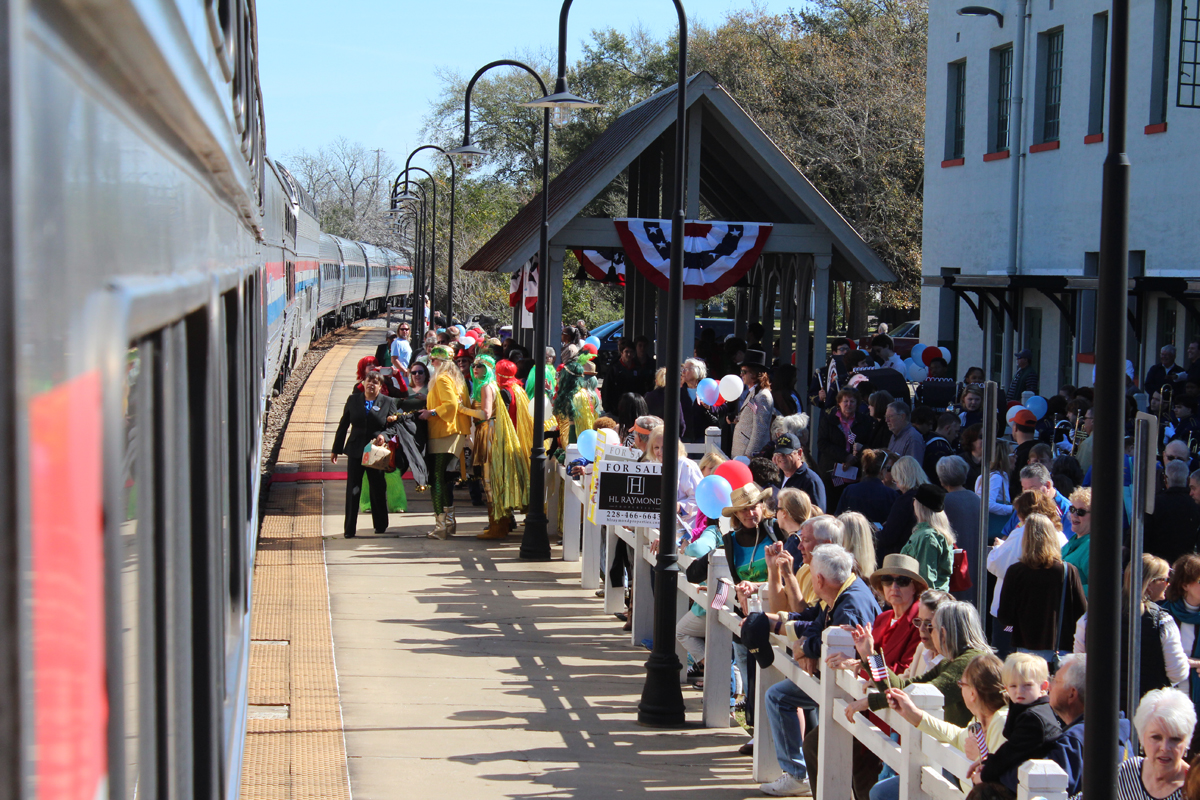




Mr. Fine don’t forget 80% of that Infrastructure funding is going to Hwys, so the blame can also be shared with American drivers who thought they shouldn’t have to pay for the rising costs of hwy building & maintenance with higher gas taxes to keep up with inflation. As for your view on on Amtrak eliminating experienced mgmt that had been going on for some time as far back a Mr Boardman & the failure to order new equipment dates back about as far as that. Theres plenty of blame to spread a among numerous Administrations of both parties for Amtrak’s current situation. The current Boards failures & its fixation with covering for the failing NEC is at the heart of Amtraks current dilemma.
Please explain how the NEC is failing when trains are once again approaching 90% and in some cases 100% of capacity. Besides the NEC, the California corridors, the corridors in the Chicago area and the only LD train that makes any sense is the Auto Train. The other LD trains should be discontinued, and the Auto Train concept should be expanded. If the Americans love their cars and want to take them with them then let’s go after that market by expanding that service to corridors that will pay off. Chicago to Florida (skipping DC), Chicago to Texas, LA to Vegas, and there are others. The goal should be a day’s drive and one overnight on the train Why does Amtrak continue with its archaic 1950s business model? Any organization that refuses to change will die. Amtrak is in its death throes. Congress won’t rescue it. They are too busy worrying about getting reelected and spending money where the votes are. Amtrak LD does not provide enough votes because there is very little market for long distance trains. Just look at the difference in boardings for Amtrak compared to the airlines. From New York to Florida, Amtrak takes ten times as long and costs ten times as much. As one millennial contributor to Inside Magazine commented, “Amtrak overnight trains are not for the faint of heart.” Although there were things she enjoyed, next time she’ll fly. That is probably the experience of most of Amtrak passengers these days.
Successfully passed the Infrastructure Bill with record INVESTMENT in Amtrak!
Mr. Riley PLEASE read the bill, the whole fairy tale: they consumed billions of China virus emergency funds, lined upper management pockets while getting rid of experienced old heads, equipment maintenance, and operating and train service crews and failed to order new cars which take over 10 years to achieve service status. I have a pass and won’t ride the filthy breakdown every day trains.
Lofty & laudable plans but not possible with current Amtrak Board & Mgmt. These types of of plans would require breaking up Amtrak into three separate independent units NEC, State Supported & LD with separate Boards & funding. Under the current arrangement Amtrak mgmt is only interested in touting the looser NEC. ALSO…What are the Repubs Grand Plans for Amtrak?????? I haven’t heard of any but judging by their past record I wouldn’t see it as being anything short of defunding as usual, I didn’t see Elaine Chow as an advocate of Amtrak she was too busy getting inside info for her familys shipping company. Bush Jr nearly bankrupted Amtrak but hey the third time will be the charm right! Just wait until your “BOYS” no plans plan fumbles! I can’t wait & I’m sure the wait will be a short one!
Being that the House, Senate and White House are all Democrat, I’d have to ask what’s the DEMOCRAT plan for Amtrak.
Bob Johnston’s article in the (just sent out) December 2022 issue of “Trains” tells a well written tale of Amtrak’s considerable issues/challenges with its long-distance network and given that it is operating on band-aids, bailing-wire, not-enough equipment, not enough operating crews, and a prayer, the idea of expanding Amtrak’s L.D. network now or in the near future is silly, to say the least.
Yes, maybe they are smoking some ‘funny’ cigarettes at the FRA offices back in D.C. (is pot legal there yet?).
As for restoring the route of the “Floridian” (discontinued in Oct. 1979), there really are no direct routes between Indianapolis and Chicago and the old Monon route north of Bedford in Indiana has been severed. So how would the Floridan travel through Indiana north and south/ to/from Chicago, enroute to Florida.
And as others have noted here, segments of the routes for the old ‘North Coast Hiawatha’ and the ‘Pioneer’ are no longer there. Also, didn’t the ‘National Limited’ run on the old Baltimore & Ohio west of Indianapolis (and in parts of Ohio ) and those parts of the “B&O” lines are no longer there (along with some segments of the old Pennsy in Ohio that it operated on?). Once those old railroad lines are abandoned, they’re gone …..
Yes, there is a “Southern Montana Passenger Rail Coalition” (or something along that name) that is focused on restoring the ‘North Coast Hiawatha’ on the current Montana Rail Link (soon to be handed back to BNSF Railway), but they’re a long way from bringing that line back into passenger operations, never-mind the miserable (and incompetent) condition of the national passenger (basket-case) operation that is otherwise known as Amtrak ….
As for getting across Indiana, a reconstituted Floridian could use CSX’s CE&D Sub all the way to Evansville, then onward to Nashville, etc. It is ex-C&EI trackage that is shared with UP north of Woodland Junction, Illinois. It was wall-to-wall trains on single track back in the ’90s/early 2000s, but has surely been PSR’d since.
The National Limited used the ex-NYC from Indianapolis to Terre Haute, then swung over to the ex-PRR for the remainder of the way into St. Louis, passing through my hometown along the way.
When we hear about yet another proposed federal study on passenger rail, it should come with its own copy of the Beatles “Magical Mystery Tour.”
For a dose of reality, best to read the tea leaves that don’t lie:
1) As the U.S. economy sinks due to the weight of excessive stimulus costs, providing COVID care to the Third World, and supporting Ukraine, nobody in Washington, but the most fanatical, even dream of a passenger rail renaissance.
2) Given the encroachment of inflation amidst fears of recession within a war environment requiring investing in our military and allies, the priority for government spending will absolutely be in our military.
3) “Amtrak Joe” will soon be a distant memory, as the mid-term elections will displace many Democrats; the 2024 election will evidence any Republican can run on a laundry ticket (remember Fiorello LaGuardia) and decisively defeat Biden or any other contenders.
4) It is apparent the current make-up of Congress has little interest in Amtrak, nor any taste for investing in any proposals for its growth. If not, why would Congress be so blasé over Amtrak’s Board continuing to lack its full complement; let alone, unconcerned over the incredible lack of expertise to offer Amtrak so desperately in need of such stewardship? Such indifference by Congress certainly extends to Amtrak’s corporate management, whose lack of requisite railroad experience continually shows, e.g., the recent operational fiasco of two “Wolverines” en route to Chicago on a Friday.
What will it take for Congress to understand how corporate management were generously rewarded with bonuses (not clawed back); yet, dismiss historical facts how the GN and NP served both Pullman and coach passengers in a 48-seat dining car augmented by a full service grill lounge on their premier trains? Yet, these grifters instituted a discriminatory policy to prevent cash-paying coach passengers using diners, especially on Superliners, despite how such 72-seat diners could serve coach travelers with one more waiter during season.
5) Given the inability of current management and their Board to competently function, Congress will never legislate funds for additional passenger equipment. Constantly trashing by Amtrak leadership of its LD trains has had its impact, which now has spread throughout the system. (We can only rejoice Amtrak did not purchase the “City Night” crap equipment.)
6) One important issue overlooked by those picking routes and dreaming of consists: former CEO Graham Claytor had working for him a respectable in-depth railroad experience and favorable Capitol Hill relations. Importantly, Claytor also had the Superliners AND a pool of HEP-equipped equipment that allowed for route expansion. Those days are long gone, which explains why Sightseer cars are used to carry shorts in lieu of Santa Fe hi-levels.
This review of the pertinent issues provides a realistic explanation of why no funds were even directed for Amtrak to repair its wrecked cars in storage at Beech Grove. Until Amtrak reforms its Board and corporate management; dismissing neophytes in corporate management from outside railroading, its tin cup for more taxpayer funds will remain empty-just as VIA has dried up its resources from CN and CP.
The United States will never have a passenger rail system to rival that of Europe or China or Japan. Distances between most European cities and countries are shorter and there is more density in population. Most rail lines are electrified and the various governements pour millions of dollars into those rail systems . Finally people in Europe and China and Japan which is a true railroad nation are enthusiaticabout their trains and give heavy support and ride the trains on a regular basis. Here in America, people have a love affair with their cars and will never take even one ride on a train anywhere. More cars are manufactured, billions spent on new highways and increasing the capacity on existing ones. There will always be some form of passenger rail travel in this country but a very small percentage of riders and an even smaller piece of the transportation pie. Even if it was possible to rebuild and reinvent the American passenger train into high speed rail linking the major cities, it still won’t be enough to get people back to riding the train. It will be interesting to see if Brightline;s attempt at high speed rail in Florida and eventually in the West will be able to suceed in turning the tide back to the public taking the train once again
Joseph C. Markfelder
Does anyone (speak up, Bob Johnston) have an actual number on the amount of money that is available for long-distance route expansion? I’ve heard $2.5 billion. Many routes – including those which have had previous studies done – would suck up over half that amount. Everyone has a wish list, but a specific number might curb some of the more outlandish proposals.
Mark,
Assume this site will have more information on the analysis process. So far there is no “Notice of Funding Opportunity” (NOFO) for this and other FRA-led programs such as the Corridor Identification Program
The Floridian could be a great re-addition to the network, serving several now much larger southern cities, but as the article already notes there are numerous challenges across the entire route. If Amtrak and CSX and NS can’t agree on ~150 miles along the gulf coast, I see little chance of getting from Chicago to Florida over 1,000 + miles of mostly single track, unless the train is scheduled to take 3 days to get there.
But I will submit my thoughts on the matter to the FRA since they asked.
‘[Sigh!] Yet another “study” to no resolve. Don’t hold your breath for maiden train operations beyond dialogues and literature.
It’s politics.
When politicos scream that they aren’t getting part of the Amtrak pie, they demand a new study to be funded. Study is released, fingers in cheek press release says that certain sites support LD service but have no funding.
Study dies as well as the attempt to run a service.
Time to change the business model.
Regarding the Texas Chief, Lone Star route, close the 199 mile gap from Oklahoma City to Newton.
Then track upgrades are needed and equipment which is way down the road.
Sadly these are all pie in the sky until the current long distance network returns to a state of good repair.
And the Montrealer.
And a train to Columbus — a fast growing city no longer mid-sized.
Have to start somewhere, bring back The Floridian that should be a no brainer.
If it were available, I’d use it in a heartbeat!
I am just wondering if the photo of an Amtrak train at Laramie is actually a detouring California Zephyr and not the Pioneer. I rode the Pioneer many times and it was always a 4-car train (Diner/Lounge, 2 coaches and a sleeper) with 1 F40. The train in the picture is much longer and while its a bit hard to see because of a pole has a Sightseer Lounge, which the Pioneer never had in its consist.
Nope-It’s the Pioneer. Consist from the front:
F40s 298 + 390
MHC 1464
Sleepers 32093, 32019
Diner 38065 (with a special Pioneer-themed interior)
Coach 34086
Coach-baggage 31039
Diner 38004 (deadhead)
HiLevel Coach-dorm 39929 (deadhead)
Note also on this trip, the Zephyr continuing on to California at Denver had a transition sleeper, three full sleeping cars, two coaches, two coach-baggage cars, diner, and a Sightseer Lounge with both the upstairs and downstairs service areas staffed.
The only way to get this done would be for a partnership between the government and freight railroads to increase capacity on freight lines that are currently experiencing capacity issues. In return, the freight railroads would have to allow Amtrak to operate passenger trains on routes that receive capacity improvement subsidies.
The other issue is a shortage of equipment. Even if Amtrak was capable and willing to go daily on the Sunset and Cardinal routes, I am not sure they could do that. So there needs to be a plan for a long-haul fleet of coaches, diners, and sleepers to replace the Superliners. This needs to be started within the next year. The viewliner 2 design is fine if Siemens could design and build them. The European sleeping car model would not work on the longer routes to the west coast.
I’m all for reestablishing a network of long distance trains in the US to encourage use by the traveling public. With that said, any long distance service faces one major problem, lack of speed. Until we can figure out how to get our trains to travel the country as fast as those in Europe, China and elsewhere, the traveling public won’t be lining up to use them.
You will never get speed on an LD. Won’t happen. You need frequency, connectivity and reliability. Those are your only hopes. Traditionally the only fast-stepping transcon route is the Santa Fe.
LD’s suffer from other factors than single-tracking and freight congestion. Many of the routes are extremely curvy and indirect, such as the former Great Northern in Montana. Also some moves into big city terminals involve slow and complex movements through junctions hardly conducive to speed.
“Many of the routes are extremely curvy and indirect, such as the former Great Northern in Montana.” Really? Where? Indirect between where and where else?
Reality check: The eastbound Empire Builder currently averages over 60 MPH between Shelby, Montana and Williston, North Dakota with 4 intermediate stops including fueling at Havre. Overall, speed restrictions (from the standard 79 MPH passenger/60 MPH freight) are limited to terminals and the west slope of Marias Pass. From North Dakota border to the Idaho border, the ex-GN main line in Montana is 672 miles compared to 801 miles for the former NP.
wtf?
60 mph on its own route (not air line distance) which is not direct.
Any map shows that the GN is not a straight line not even close. See TRAINS magazine February 2021 Page 33.
Well, the map you cite includes less than 1/5 of the route across Montana. And the track speed is largely 79 MPH/60 MPH. Amtrak is easily faster than driving from Whitefish to Libby even though the highway appears to be more direct. This is NOT, by the way, the 60 MPH segment I referenced earlier.
One could make the same distorted claim showing a map of the “fast-stepping” Santa Fe route in Northern New Mexico with its 3.5 percent grades and segments of 20 and 30 MPH track speeds.
Either one would be out of context.
This sounds like folks have been smoking those funny cigarettes again, if one reads Bob Johnston’s many past posts here and in the magazine itself detailing Amtrak’s inability or lack of will to maintain the current LD routes adequately, in all respects.
This is so wrong on a number of levels. Why bring in another bureaucracy to “study” what we already know? What we already know is that Amtrak has dropped a number of LDs and can barely operate those LDs remaining. End of “study”.